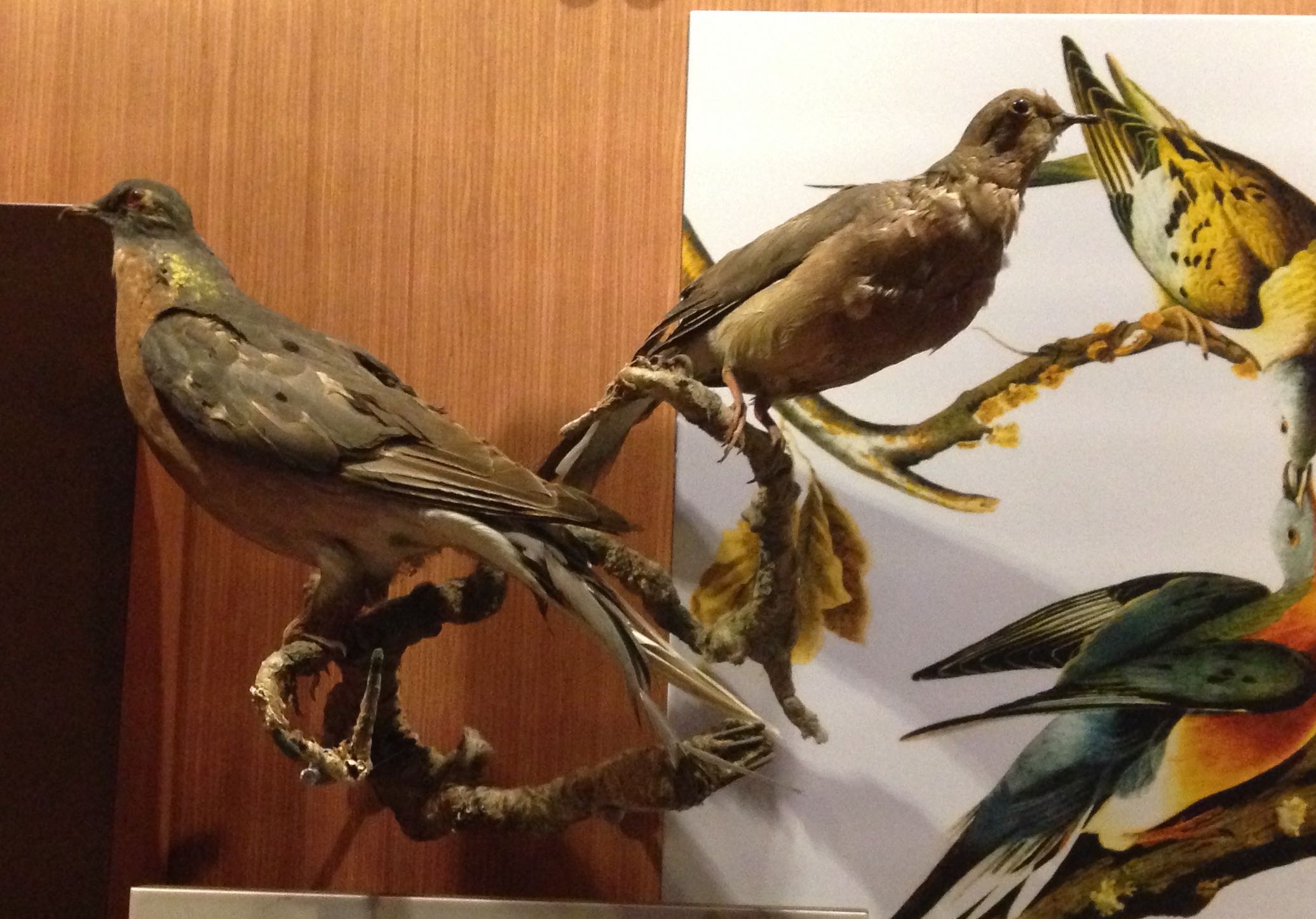Encyclopedia Dubuque
"Encyclopedia Dubuque is the online authority for all things Dubuque, written by the people who know the city best.”
Marshall Cohen—researcher and producer, CNN
Affiliated with the Local History Network of the State Historical Society of Iowa, and the Iowa Museum Association.
PASSENGER PIGEONS: Difference between revisions
No edit summary |
No edit summary |
||
| Line 4: | Line 4: | ||
The following account of a Western wild Pigeon Roost is from the Dubuque Miners' Express: | The following account of a Western wild Pigeon Roost is from the Dubuque Miners' Express: | ||
There is an immense Pigeon Roost in the forks of | There is an immense Pigeon Roost in | ||
the forks of the Maquoketa river in | |||
Jackson County, such as has never been | |||
miles long, and a half a mile in width. There can be | seen in this country before. It is | ||
three miles long, and a half a mile in | |||
width. There can be no estimate made of | |||
feeding places, being three in number, and each covering | their numbers. Their roosting places are | ||
almost a mile distant from their nests | |||
and feeding places, being three in number, | |||
and each covering a section of land; and | |||
in passing to and fro they darken the air | |||
with their number; they break down young trees | |||
with their weight and hundreds are killed by getting | with their weight and hundreds are killed by getting | ||
entangled in the falling limbs and branches. The people | entangled in the falling limbs and branches. The people | ||
Revision as of 03:05, 15 February 2015
PASSENGER PIGEONS.
Dubuque Miners' Express, reprinted in the Vermont Phoenix, May 26, 1843
The following account of a Western wild Pigeon Roost is from the Dubuque Miners' Express:
There is an immense Pigeon Roost in
the forks of the Maquoketa river in
Jackson County, such as has never been
seen in this country before. It is
three miles long, and a half a mile in
width. There can be no estimate made of
their numbers. Their roosting places are
almost a mile distant from their nests
and feeding places, being three in number,
and each covering a section of land; and
in passing to and fro they darken the air
with their number; they break down young trees
with their weight and hundreds are killed by getting
entangled in the falling limbs and branches. The people
kill them with clubs; and their noise is so loud that
when a gun is fired amongst them, the report cannot be
heard; and a person can stand in one place and shoot all
day, the birds returning as soon as you can load. They
are building their nests, and the people are alarmed,
lest they may destroy their crops. (1)
Passenger pigeons were often described as blackening the skies when their colossal flocks passed overhead.
A rough estimate of the number of birds passing a given
point in spring may be useful. The cross-section of an
average flock was say, a hundred yards from front to rear,
and fifty yards in height, and when the birds were so
close as to cast a continuous shadow there must have been
fully one pigeon per cubic yard of space . . . or say
30,000,000 for a flock extending from woodland to the other.
Since such flocks passed repeatedly during the greater part
of the day of their chief flight at intervals of a few minutes,
the aggregate number of birds must have approached 120,000,000
an hour for, say five hours, or six hundred million pigeons
virtually visible from a single point in the culminating part
of a single typical migration.”
W.J. McGee describing a flight near Dubuque, one spring
day in the early 1860s or 1870s. (2)
The famous ornithologist John James Audubon claimed to have seen a flock take three days to pass by. The birds appeared inexhaustible and were treated as such. Each year over the course of several decades, hundreds of thousands of passenger pigeons were killed and trapped. They were shot for sport, commercially hunted, and even captured for use as live trapshooting targets.
Ed Volkert of Dubuque used a net that was thirty by
sixty feet. He took as many as 1,500 birds in one
morning and sold the live birds for ten cents each
to be used as targets for trapshooting. The crippled
birds were killed and sold by the barrel, which went
for a dollar on the market in Chicago. (3)
However, by the late 19th century the great flocks had disappeared and the last confirmed report of a wild passenger pigeon occurred on March 24, 1900, in Pike County, Ohio. The bird had been shot and killed by a young boy. (4)
Passenger pigeons likely remained in the wild, but all subsequent sightings were unconfirmed. President of the United States, Theodore Roosevelt owned a cabin in Albemarle County, Virginia, known as Pine Knot. During a stay in May 1907, Roosevelt saw what he believed to be a small flock of passenger pigeons and wrote to naturalist John Burroughs about it. At Burroughs’ suggestion, Roosevelt was able to collect at least one statement of corroborative evidence from an Albemarle County neighbor. (5)
In 1907 the birds could still be viewed, at least in captivity. By 1910, only a single individual remained, a female named Martha, at the Cincinnati Zoological Gardens. Passenger pigeons passed into history with Martha’s death at around 1:00 p.m. on September 1, 1914. (6)
---
Source:
1. "Pigeon Roost," Online: http://iagenweb.org/boards/jackson/documents/index.cgi?read=414250
2. Project Passenger Pigeon. Online: http://www.passengerpigeon.org/states/Iowa.html
3. Ibid.
4. Passenger Pigeons. Online: http://www.theodorerooseveltcenter.org/Blog/2013/August/09-Passenger-Pigeons.aspx
5. Ibid.
6. Ibid.


